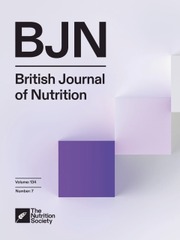No CrossRef data available.
Genetic Causal Association between Malnutrition, Overweight and Venous Thromboembolism: A Two-Sample Mendelian Randomization Study
Published online by Cambridge University Press: 03 April 2025
Abstract
Despite previous observational studies suggesting that malnutrition could be involved in venous thromboembolism (VTE), definitive causality still lacks in high-quality research evidence. This study aims to explore the genetic causal association between malnutrition and VTE. The study was performed using summary statistics from genome-wide association studies (GWAS) for VTE (cases =23,367; controls =430,366). Single nucleotide polymorphism (SNP) associated with exposure was selected based on quality control steps. The primary analysis employed the Inverse-variance weighted (IVW) method, with additional support from MR-Egger, weighted median, and weighted mode approaches. MR-Egger, leave-one-SNP-out analysis and MR-PRESSO was used for sensitivity analysis. Cochran’s Q test was used to assess heterogeneity between instrumental variables (IVs). IVW suggested that overweight have a positive genetic casual effect on VTE (OR=1.1344, 95% CI= 1.056-1.2186, p<0.001). No genetic casual effect of malnutrition (IVW: OR=0.9983, 95% CI= 0.9593-1.0388, p=0.9333) was found on VTE. Cochran’s Q test suggests no possible heterogeneity in both related exposures. The results of the MR-Egger regression suggest that the analysis is not affected by horizontal pleiotropy. The results of the MR-PRESSO suggest that there are no outliers. The results revealed a statistical genetical association where overweight correlate with an increased risk of VTE. Meanwhile, no genetical causal link was observed between malnutrition and VTE. Further research is warranted to deepen our understanding of these associations.
Keywords
- Type
- Research Article
- Information
- Copyright
- © The Author(s), 2025. Published by Cambridge University Press on behalf of The Nutrition Society
Footnotes
Yan Wang and Jian Shi contributed equally to this work.


